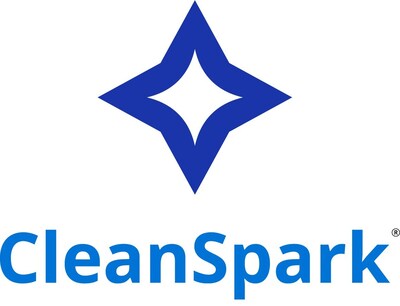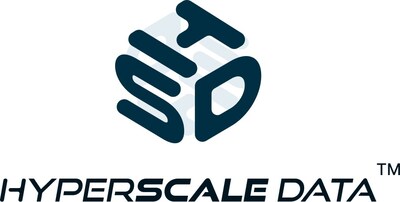Automatic Mower Market Poised for Strong Growth with a Projected Value of $5.8 Billion by 2031: Technological Advancements and Consumer Trends Driving a 7.5% CAGR: Market Research Intellect
Press Releases
Sep 19, 2024
The Automatic Mower Market is expected to experience significant growth from 2024 to 2031. Driven by advancements in robotics and AI technology, increasing consumer preference for efficient and eco-friendly lawn care solutions, and rising disposable incomes, the market is projected to expand substantially. With a growing focus on automation and smart home integration, automatic mowers are gaining popularity for their convenience and precision. This trend is further supported by ongoing innovations and improvements in battery life, operational efficiency, and user-friendly features. As a result, the market is likely to witness a robust CAGR, reflecting a strong demand and substantial investment opportunities in the sector.
LEWES, Del., Sept. 19, 2024 /PRNewswire/ — The Automatic Mower Market Size is valued at approximately $3.5 billion and is projected to reach around $5.8 billion by 2031, growing at a compound annual growth rate (CAGR) of about 7.5%.

Download PDF Brochure: https://www.marketresearchintellect.com/download-sample/?rid=296147
202 – Pages
126 – Tables
37 – Figures
Scope Of The Report
|
REPORT ATTRIBUTES |
DETAILS |
|
STUDY PERIOD |
2020-2031 |
|
BASE YEAR |
2023 |
|
FORECAST PERIOD |
2024-2031 |
|
HISTORICAL PERIOD |
2020-2023 |
|
UNIT |
Value (USD Billion) |
|
KEY COMPANIES PROFILED |
Husqvarna Group, Bosch, Robomow, Stihl, John Deere, Gardena, Worx, and Kärcher |
|
SEGMENTS COVERED |
By Type, By Application And By Geography |
|
CUSTOMIZATION SCOPE |
Free report customization (equivalent to up to 4 analyst working days) with purchase. Addition or alteration to country, regional & segment scope |
Automatic Mower Market Overview
1. Market Growth and Size The global automatic mower market has been experiencing substantial growth, valued at approximately $3.5 billion in 2024. The market is projected to expand significantly, reaching around $5.8 billion by 2031. This growth is driven by increasing consumer preference for automated, low-maintenance lawn care solutions. The compound annual growth rate (CAGR) is estimated to be 7.5% during the forecast period. The rise in disposable incomes, coupled with advancements in robotic technology, is further fueling market expansion. Additionally, the growing trend toward eco-friendly and sustainable gardening practices contributes to the increased adoption of automatic mowers, reflecting a shift in consumer attitudes towards convenience and environmental responsibility.
2. Technological Advancements Technological innovation is a major driver of the automatic mower market. Recent advancements include enhanced navigation systems, improved battery life, and sophisticated sensors for obstacle detection and avoidance. These technologies allow mowers to navigate complex landscapes, including uneven terrain and narrow spaces, with greater precision. Developments in artificial intelligence (AI) and machine learning have also enabled automatic mowers to optimize their mowing patterns for efficiency and coverage. The integration of smart home technology allows users to control and schedule their mowers via mobile apps, further enhancing convenience and user experience. These technological improvements not only boost performance but also drive consumer interest and market growth.
3. Consumer Preferences and Trends Consumer preferences for automatic mowers are evolving, with increasing emphasis on convenience, efficiency, and sustainability. Modern consumers seek solutions that reduce the time and effort required for lawn maintenance, and automatic mowers offer a practical answer to this demand. There is a growing trend towards eco-friendly products, with automatic mowers providing a quieter, emission-free alternative to traditional gas-powered models. The integration of smart technology and user-friendly features, such as remote control and programmable schedules, appeals to tech-savvy consumers. Additionally, the aesthetic and design improvements in automatic mowers cater to homeowners looking for stylish and functional lawn care solutions.
4. Competitive Landscape The automatic mower market is highly competitive, with several key players dominating the industry. Major companies include Husqvarna, Robomow, and Bosch, among others. These companies are investing heavily in research and development to innovate and enhance their product offerings. Strategic initiatives such as mergers and acquisitions, partnerships, and collaborations are common as companies seek to expand their market presence and technological capabilities. Brand reputation, product quality, and technological advancements are critical factors that influence competition in the market. Companies are also focusing on differentiating their products through unique features and advanced functionalities to attract and retain customers.
Download Sample Report Now: https://www.marketresearchintellect.com/download-sample/?rid=296147
5. Regional Market Dynamics The automatic mower market exhibits significant regional variations, with North America and Europe being the leading markets due to high consumer adoption rates and advanced technological infrastructure. In North America, particularly the United States, there is a strong demand for automated lawn care solutions driven by high disposable incomes and a preference for convenience. Europe follows closely, with countries like Germany and Sweden showing high adoption rates due to environmental awareness and technological advancements. The Asia-Pacific region, including countries like Japan and South Korea, is also emerging as a growing market due to increasing urbanization and rising standards of living.
6. Challenges and Barriers Despite the positive growth outlook, the automatic mower market faces several challenges. High initial costs of automatic mowers can be a barrier for some consumers, limiting market penetration. Additionally, concerns about the reliability and durability of robotic mowers, especially in challenging weather conditions, can affect consumer confidence. The need for regular maintenance and occasional repairs also presents a challenge. Furthermore, competition from traditional lawn care solutions and the availability of alternative automated gardening tools may impact market growth. Addressing these challenges through product innovations and cost reductions will be crucial for sustaining market expansion.
7. Sustainability and Environmental Impact The automatic mower market aligns well with the growing emphasis on sustainability and environmental conservation. Unlike traditional gas-powered mowers, automatic mowers are electric and produce zero emissions, contributing to a reduction in air pollution. The use of solar-powered models and energy-efficient technologies further enhances their environmental benefits. Additionally, automatic mowers operate quietly, minimizing noise pollution and disturbance to residential areas. The focus on eco-friendly materials and sustainable manufacturing processes also supports the market’s alignment with broader environmental goals. As consumers increasingly prioritize green practices, the automatic mower market is well-positioned to benefit from this trend.
8. Future Outlook and Opportunities The future of the automatic mower market appears promising, with several opportunities for growth and innovation. As technology continues to advance, the development of more affordable, efficient, and user-friendly automatic mowers will likely drive further market expansion. Opportunities exist in emerging markets where increasing urbanization and rising disposable incomes create new demand. The integration of advanced features such as autonomous navigation, enhanced AI capabilities, and improved battery technology will continue to attract tech-savvy consumers. Additionally, partnerships with smart home technology providers and expansion into commercial applications present potential growth avenues. The market’s ability to adapt to changing consumer needs and technological advancements will be key to its continued success.
Geographic Dominance:
The automatic mower market exhibits notable geographic dominance, with North America and Europe leading the way. North America, particularly the United States, holds a significant share of the market due to high consumer adoption rates and a strong preference for innovative, convenience-driven solutions. The region’s substantial disposable incomes and high standards of living contribute to the widespread use of automatic mowers. Europe follows closely, with countries such as Germany, Sweden, and the United Kingdom demonstrating high adoption rates driven by environmental awareness and advanced technological infrastructure. The European market’s focus on sustainability and eco-friendly products aligns with the benefits of automatic mowers, such as reduced emissions and noise pollution. Meanwhile, the Asia-Pacific region, including countries like Japan and South Korea, is emerging as a growing market due to rapid urbanization and increasing consumer affluence, presenting future growth opportunities for automatic mowers.
Automatic Mower Market Key Players Shaping the Future
The automatic mower market is significantly influenced by key players such as Husqvarna Group, Bosch, Robomow, Stihl, John Deere, Gardena, Worx, and Kärcher. These companies are shaping the industry through their innovative technologies, extensive product offerings, and strong market presence. Each player contributes to the market’s growth and evolution, driving advancements in robotic lawn care solutions and catering to diverse consumer needs.
Automatic Mower Market Segment Analysis
The Automatic Mower market is segmented based on By Type, By Application and Geography, offering a comprehensive analysis of the industry.
By Type
- Robotic Lawn Mowers Robotic lawn mowers are the most prevalent type in the market, known for their autonomous operation. These mowers use advanced sensors and GPS technology to navigate and mow lawns with minimal human intervention. They are designed to handle various lawn sizes and types, offering features such as programmable schedules and smart navigation systems. Their popularity is driven by their efficiency, ease of use, and ability to provide consistent lawn care.
- Automated Riding Mowers Automated riding mowers are designed for larger lawns and commercial applications. Unlike robotic mowers, these units require a rider but offer automated functions such as self-propulsion and GPS-guided mowing paths. They combine the convenience of automation with the power and capacity of traditional riding mowers, making them suitable for expansive areas and heavy-duty tasks.
- Automated Push Mowers Automated push mowers are designed for smaller lawns and are less common than robotic and riding mowers. They offer automated features in a push-mower format, combining manual operation with automated assistance to enhance mowing efficiency. These mowers are generally more affordable and suitable for users with smaller lawn areas.
By Application
- Residential The residential segment dominates the automatic mower market, driven by homeowners seeking convenience and efficient lawn care solutions. Automatic mowers for residential use are designed to handle various lawn sizes and complexities, with features that cater to everyday residential needs. These mowers are popular for their ease of use, quiet operation, and ability to maintain a well-groomed lawn with minimal effort.
- Commercial The commercial application segment includes mowers used for public spaces, parks, golf courses, and large commercial properties. These mowers are typically larger and more robust, designed to handle extensive areas and demanding conditions. They offer features such as enhanced durability, high cutting capacities, and advanced automation for efficient large-scale lawn maintenance.
- Industrial Industrial applications involve the use of automatic mowers in environments such as large industrial facilities and utility areas. These mowers are built for heavy-duty performance and are capable of managing large, open spaces with minimal human intervention. They are designed to withstand harsh conditions and provide reliable, continuous operation.
By Geography
- North America North America, particularly the United States and Canada, is a leading market for automatic mowers due to high consumer adoption, advanced technology infrastructure, and a strong preference for convenience. The region’s significant disposable incomes and focus on innovative solutions contribute to its market dominance. The growing trend towards smart home integration also boosts the demand for automatic mowers in this region.
- Europe Europe, with key markets such as Germany, Sweden, and the United Kingdom, shows strong adoption of automatic mowers driven by environmental awareness and technological advancement. European consumers prioritize sustainability and efficient lawn care solutions, which aligns with the benefits offered by automatic mowers. The region’s focus on eco-friendly products and advanced garden technologies supports the market’s growth.
- Asia-Pacific The Asia-Pacific region, including countries like Japan, South Korea, and China, is emerging as a growing market for automatic mowers. Rapid urbanization, increasing disposable incomes, and rising standards of living contribute to the expanding demand. The adoption of automated lawn care solutions is increasing as consumers seek efficient and modern gardening solutions in urban and suburban areas.
- Latin America Latin America is witnessing gradual growth in the automatic mower market, driven by increasing urbanization and improvements in living standards. While adoption rates are lower compared to North America and Europe, the demand for automated solutions is rising as consumers seek convenient and efficient lawn care options. Market growth in this region is expected to accelerate with continued economic development and technological advancements.
- Middle East and Africa The Middle East and Africa are emerging markets for automatic mowers, with growth driven by increasing interest in modern gardening solutions and technological advancements. The market in this region is characterized by diverse consumer needs and varying levels of adoption. As economic conditions improve and urbanization increases, the demand for efficient and automated lawn care solutions is expected to rise.
Manufacturing And Construction:
The manufacturing and construction of Automatic Mower involve a complex, multi-stage process to ensure high-quality, sterile packaging solutions. The process begins with the production of base paper, which is then coated with polyethylene for moisture resistance. For enhanced protection, layers of aluminum foil may be added to create a high-barrier laminate. This multi-layered paper is then subjected to aseptic processing, where it is sterilized to eliminate any microorganisms, ensuring product safety and longevity. The construction of aseptic paper packaging involves sophisticated machinery that forms and seals the paper into containers, such as cartons or pouches. This process must adhere to stringent hygiene standards to maintain sterility throughout. Innovations in manufacturing techniques focus on improving efficiency, reducing costs, and enhancing the environmental sustainability of the packaging materials. Continuous advancements in technology and material science are shaping the future of aseptic paper packaging, making it more adaptable to diverse industry needs.
Our related Reports
Global Smart Robot Lawn Mower Market is categorized based on Application (Residential Lawns, Commercial Lawns, Public Parks, Golf Courses, Sports Fields, Landscaping Services) and Product (Robotic Lawn Mowers with GPS, Robotic Lawn Mowers with App Control, Robotic Lawn Mowers with Rain Sensors, Robotic Lawn Mowers with Anti-Theft Alarms, Solar-Powered Robotic Lawn Mowers) and geographical regions
Global Aseptic Paper for Pharmaceuticals Packaging Market is categorized based on Type (Aseptic Paper up to 100 microns, Aseptic Paper from 100 to 200 microns, Aseptic Paper from 200 to 300 microns, Aseptic Paper above 300 microns) and Application (Dairy Products, Drinks, Instant Food, Other) and geographical regions
Global Aseptic Paper for Food Packaging Market is categorized based on Type (Below 300 Microns, 100-200 Microns, 200-300 Microns, Above 300 Microns) and Application (Dairy Products, Drinks, Instant Food, Other) and geographical regions
Global Aseptic Paper Packaging for flat top carton market size and forecast is categorized based on Application (Dairy Products, Beverages, Others) and Product (Bleached Paperboard, Coated Unbleached Kraft Paperboard) and geographical regions
Global Aseptic Paper Packaging Market is categorized based on Type (Boxes, Cartons, Bags, Pouches;) and Application (Food & Beverages, Pharmaceuticals, Cosmetics, Others;) and geographical regions
Global Epoxy Resin Carbon Fiber Prepreg Market is categorized based on Type (Thermoset, Thermo-plastic) and Application (Aerospace, Automative, Sports Gooding, Energy, Others) and geographical regions
About Us: Market Research Intellect
Welcome to Market Research Intellect, where we lead the way in global research and consulting, proudly serving over 5,000 esteemed clients worldwide. Our mission is to empower your business with cutting-edge analytical research solutions, delivering comprehensive, information-rich studies that are pivotal for strategic growth and critical revenue decisions.
Unmatched Expertise: Our formidable team of 250 highly skilled analysts and subject matter experts (SMEs) is the backbone of our operations. With extensive training in advanced data collection and governance, we delve into over 25,000 high-impact and niche markets. Our experts seamlessly integrate modern data collection techniques, robust research methodologies, and collective industry experience o produce precise, insightful, and actionable research.
Diverse Industry Coverage: We cater to a wide array of industries, ensuring that our insights are both relevant and specialized. Our expertise spans: Energy, Technology, Manufacturing and Construction, Chemicals and Materials, Food and Beverages
Having collaborated with numerous Fortune 2000 companies, we bring unparalleled experience and reliability to meet all your research needs. Our proven track record reflects our commitment to excellence and client satisfaction.
Contact Us:
Mr. Edwyne Fernandes
Market Research Intellect
Call Us on: +1 743 222 5439
Email: [email protected]
Web: https://www.marketresearchintellect.com/
Linkedin: https://www.linkedin.com/company/marketresearchintellect
Twitter: https://x.com/intellectmr
Logo: https://mma.prnewswire.com/media/2483702/Market_Research_Intellect_Logo.jpg
SOURCE Market Research Intellect




